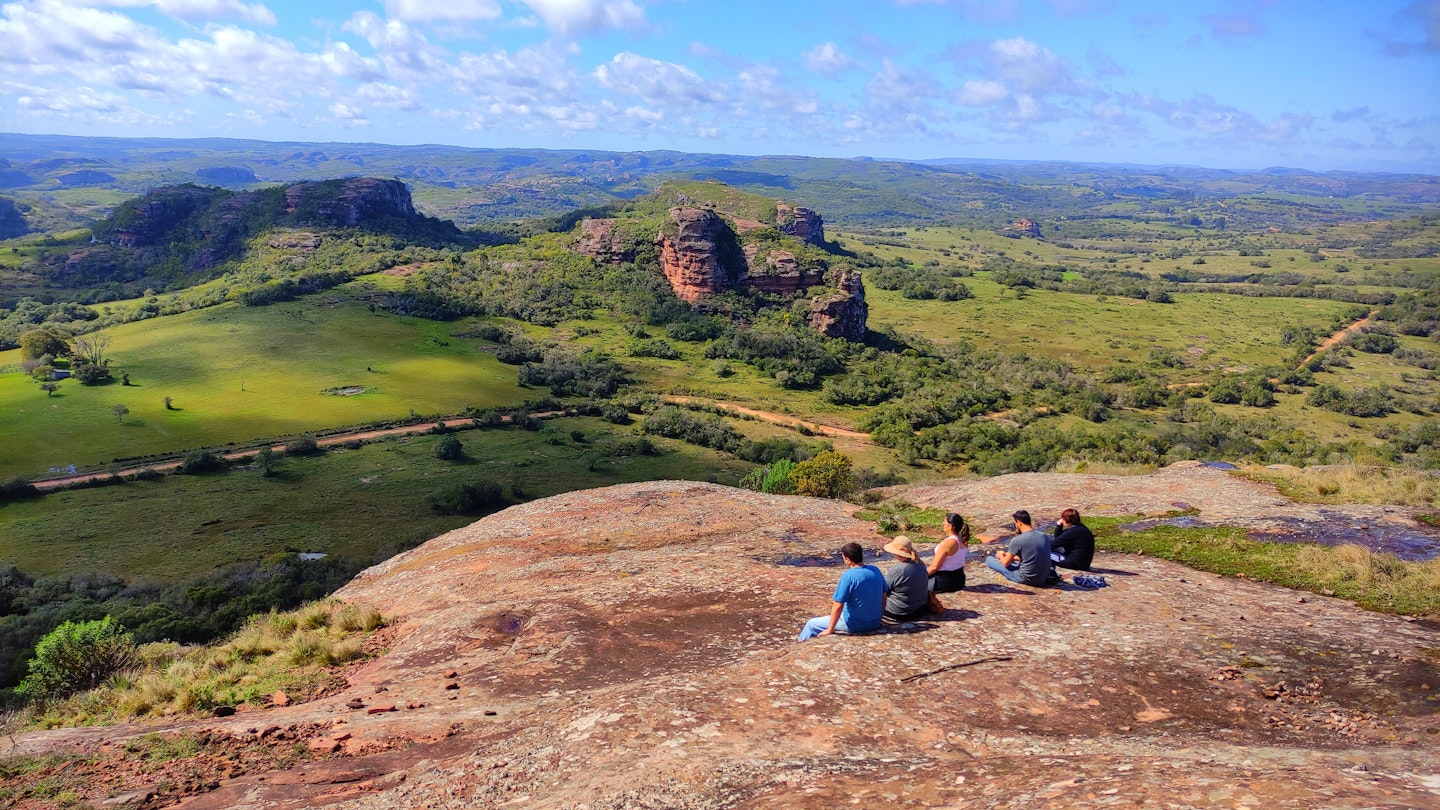Last month, two zones in Brazil’s southernmost state were recognized by Unesco as Global Geopark regions: Quarta Colônia and Caçapava do Sul, both located in Rio Grande do Sul.
“Geoparks are territories defined by Unesco as areas that have significant geological, geomorphological, or paleontological heritage of international relevance, which can facilitate regional development,” explains Dr. Adriano Severo Figueiró of the Federal University of Santa Maria (UFSM), who was part of the team that proposed the regions for this prestigious designation.
While the two parks are only a two-hour drive apart, each offers unique elements that make them ideal catalysts for regional development. Both locations are incredible sites to visit during your travels to Brazil.
Some of the Oldest Rocks on Earth
“Caçapava do Sul has a geomorphological uniqueness,” explains Dr. André Borba, looking across the succession of 500 million-year-old rock formations for which the park is famous. Borba, a geoscience professor at UFSM, has a clear passion for this part of the world. “These formations existed before any living beings, plants or animals, came into being,” he marvels.
“What’s truly special is that these rocks are showcased in a series of exceptionally beautiful mountain ranges and hills, creating a fantastic scenic beauty, especially in the Serra da Guaritas and the Serra do Secreto.”
The Serra do Segredo is particularly spectacular. Its namesake rock, the Pedra do Segredo (Secret Rock), reaches a height of 120 meters (394 feet) and offers a relatively easy hour-long trail to explore. Visitors can hike through the main caverns, culminating at the famous Portal do Segredo (Secret Portal)—a cave in the mountain’s high center offering panoramic views of the surrounding hills.
Waking up at the onsite campground grants easy access to the Serra do Segredo and its breathtaking sunrises. The area is renowned for its outdoor climbing routes and serves as one of Brazil’s principal points for hang gliding and paragliding.

Explore the Geoparks More Deeply with a Guide
If you’re eager to climb higher—to ascend the Pedra do Segredo, for instance—or to explore trails leading to remote areas, such as Toca das Carretas or Pedra Furada, employing a guide is essential. Many trails remain unmarked as they traverse private lands. Indigenous tribes and quilombos, alongside local family farms and cattle ranches, call this region home.
Consequently, Geoparks differ from national parks, often lacking defined boundaries and being managed by private entities, which may include privately owned lands. The Unesco designation aids local communities in recognizing and valuing their unique natural surroundings and resources while developing sustainable revenue models that benefit from conservation efforts.

An Artisan Connection
Dr. Elisângela Lopes da Silva was instrumental in the formation of the Geopark project and its Unesco designation, focusing on tourism development through the work of local artisans.
“During my PhD, I connected with the female artisans of the region when we still had the Municipal Center for Artisans,” she explains. “I noticed there was an opportunity to connect artisan work with tourism.”
Initially a forest ranger and researcher, Dr. Lopes da Silva managed to bridge the gap between the park and local artists through a co-op shop and atelier called Com Arte Atelier, situated within Caçapava do Sul’s city limits.
“We needed to understand how local artisans perceive the region’s natural beauty, how they relate to it, and how they interpret it,” she asserts.
However, many artists and artisans in the region were not familiar with the park zone. “We need to better understand the place first to develop our work,” says Nara Portella, a local art educator and creator. “We are in the process of creating a local identity.”

Where the Dinosaurs Roamed
In Quarta Colônia, the local identity is more pronounced. While the area showcases many rivers and waterfalls, the Quarta Colônia Geopark is renowned for its vast array of dinosaur fossils, some dating back over 230 million years. Scientists have even uncovered previously unknown species at this site.
Moreover, the Geopark designation will bolster the research center and its mission while simultaneously promoting education among local students, the community, and tourists.
According to Dr. Rosemar de Fátima Vestena, a professor at Franciscana University and CAPPA researcher, previous fossil findings were often sent for study at universities in distant states. However, now with Geopark status, “our material will be studied locally, enabling students from the region to benefit directly.”
With visitors spanning from three to 83 years of age, the CAPPA research center aims to educate residents of all ages, thereby enhancing its paleontological efforts.

How to Visit Brazil’s New Geoparks
The town of Caçapava do Sul serves as an excellent base for exploring the nearby park. Guaritas Hostel Rural offers reliable lodging options, or camping is available onsite at Pedra do Segredo Municipal Park for a fee of $6.30 per day (advance booking and tents required). Guided hikes to other trails are available but require advance arrangements, with pricing depending on the number of hikers.





